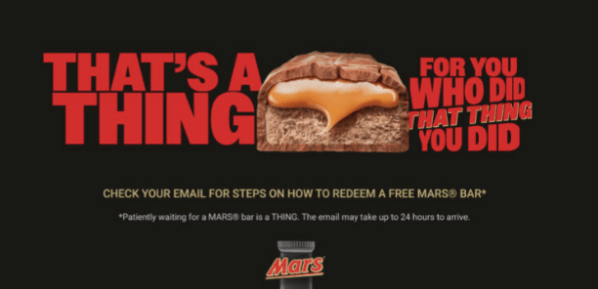Every second, a huge amount of content competes for our attention—news feeds refresh, notifications alert us, and videos play automatically before we can skip them. People aren’t just scrolling through; they’re avoiding, filtering, and tuning out. This overload of information has made our attention very valuable. Recent studies indicate the average human attention span has dwindled to approximately 8 seconds, a significant drop from 12 seconds in 2000.
The implications for brands are staggering. A compelling campaign isn’t enough. A perfectly crafted message can still vanish if it fails to break through in the milliseconds it takes for a consumer to swipe away. There was a time when audiences were captive, and brand interactions were deliberate. That world no longer exists.
Market research is undergoing a major shift to decode real engagement. The industry is moving beyond self-reported preferences to track subconscious reactions, micro-movements, and real-time behavioral data. The goal? To measure not just what consumers say they notice but what captures their focus and drives action.
The Science of Attention – How Consumers Engage Today
Attention is multifaceted – layered, fragmented, and perpetually shifting. Consumers don’t merely watch, listen, or read; they skim, multitask, and filter. What seizes their focus momentarily may not register in memory, while seemingly trivial details might linger.
Researchers categorize attention into distinct types, each influencing brand engagement strategies:
- Sustained Attention: The gold standard – deep, uninterrupted focus. Rare in today’s digital world, but invaluable. Think long-form podcasts, binge-worthy series, or an immersive gaming experience.
- Selective Attention: The ability to filter out noise and focus on what matters. Algorithms fuel this, curating feeds so that only the most relevant content makes it through.
- Divided Attention: The consumer is in multitasking mode, scrolling Instagram while half-listening to a podcast or watching TV with their phone in their hands.
- Captive vs. Voluntary Attention: Some interactions are forced like unskippable ads. Others are earned like the type TikTok users actively seek out.
The shift is clear: brands aren’t just competing against competitors. They’re up against the entire digital ecosystem: social media, streaming platforms, instant messaging, and news alerts.
The challenge for market research is no longer just understanding consumer preferences but tracking real, unconscious engagement in a landscape designed to distract.
Rethinking Engagement Beyond Traditional Metrics
Traditional market research remains essential as it provides critical insights into consumer sentiment, preferences, and decision-making. However, in a world where attention is increasingly fragmented, the industry is evolving to complement established methods with new, real-time behavioral tracking.
Self-reported data, surveys, and focus groups still offer valuable context, helping brands understand why consumers think and feel a certain way. But what people say they engage with doesn’t always reflect their actual behavior. Attention is often subconscious, shaped by instinct rather than intent.
New approaches bridge this gap by capturing real-time consumer engagement:
- Eye-tracking and facial coding: Brands analyze where people’s eyes linger and how their expressions shift during ad exposure.
- Biometric response analysis: Sensors detect physiological reactions like heart rate spikes and micro-expressions to measure subconscious attention.
- AI-powered engagement tracking: Algorithms process scrolling behavior, click patterns, and swipe speeds to assess content effectiveness.
This evolution isn’t about replacing traditional research; it’s about enhancing it. By integrating behavioral tracking with established methodologies, brands gain a full-spectrum view of consumer attention from stated preferences to real-world interactions.
How Brands Are Measuring Attention in Real Time
Leading brands no longer rely solely on traditional engagement metrics. They are leveraging behavioral data and AI-driven insights to track real consumer attention. These brands aren’t guessing what captures attention – they’re measuring it in real-time. By analyzing subconscious reactions and micro-engagement patterns, they ensure content isn’t just seen but retains focus.
- Netflix: AI-Driven A/B Testing on Thumbnails
Netflix continuously experiments with different cover images for the same show to determine which visuals drive the most engagement. Through AI-powered A/B testing, the platform assesses user behavior, tracking which thumbnails attract clicks and sustain interest. This data-driven approach maximizes viewer retention, ensuring the most compelling artwork is displayed for each user based on browsing history and preferences. - Nike: Eye-Tracking for Ad Optimization
Nike employs eye-tracking technology to study how consumers visually engage with video advertisements. Research reveals that high-energy action shots hold attention longer than static branding moments. By embedding logos and brand elements within dynamic sequences, Nike ensures its messaging remains visible even in a distracted viewing environment.
Strategies for Brands to Capture and Sustain Attention
Thriving in the attention economy requires more than visibility; it’s about maintaining focus long enough to inspire action. With audiences filtering content at unprecedented speeds, brands must employ intelligent, research-backed strategies to ensure meaningful and lasting engagement.
- Hyper-Personalization- Tailoring Content to Individual Preferences
Consumers have little patience for generic messaging. AI-driven platforms like Amazon utilize machine learning to analyze purchase history and browsing behavior, delivering personalized product recommendations that align with individual user interests. This level of customization enhances customer satisfaction and drives sales by presenting relevant items to shoppers. - The Strategic Deployment of Short-Form vs. Long-Form Content
Platforms such as TikTok and Instagram Reels demonstrate that concise, bite-sized content excels at capturing initial attention. Conversely, long-form content, like in-depth articles or documentaries, can cultivate deep engagement when audiences are genuinely interested. The key lies in discerning when and where audiences are most receptive to each format, a determination made possible through advanced market research techniques, including passive data collection and behavioral tracking. - Attention-Optimized Creative – Pre-Launch Testing
Every moment of content is valuable. With consumers filtering content at lightning speed, brands must ensure their messaging lands effectively before launching full-scale campaigns. Mars Inc. uses AI to evaluate how effective ads will be before they are launched, making sure important branding matches what the audience pays attention to.
Pre-launch attention testing, powered by neuromarketing and AI, is becoming a standard practice for brands aiming to maximize impact.
Case Study: How Mars Inc. Uses AI to Optimize Ad Effectiveness

Image Credit: Media Week
Background
As one of the world’s largest confectionery companies, Mars Inc. operates in a highly competitive industry where brand recall directly influences purchase decisions. Traditional ad testing methods provided valuable insights, but Mars recognized the need for a more precise, predictive approach to ensure its advertisements resonated before launch.
Approach
Mars developed Agile Creative Expertise (ACE), an AI-powered ad-testing tool designed to measure consumer attention, engagement, and emotional response in real-time. Unlike conventional research methods, ACE integrates biometric and behavioral analytics to refine ad content before it reaches audiences. The system leverages:
- Eye-tracking technology to pinpoint where viewers focus their attention.
- Facial coding analysis to measure emotional engagement with ad elements.
- Machine learning models to predict, with 85% accuracy, whether an ad will drive sales.
By deploying these tools during the creative process, Mars ensures every ad is optimized for maximum impact, reducing wasted ad spend and enhancing message retention.
Outcome
Mars has successfully transformed its ad optimization process by combining AI-driven insights with behavioral research. The results include:
- More effective storytelling and branding placement, ensuring key messages are absorbed.
- Improved return on ad spend (ROAS) by prioritizing only the most impactful ad creatives.
- Reduced reliance on post-campaign analysis, as ad effectiveness is determined before launch.
By integrating AI-powered pre-launch testing, Mars has redefined how brands measure and optimize consumer attention, setting a new benchmark for data-driven advertising.
The Future of Market Research in the Attention Economy
As consumer behavior evolves, so must the methods used to understand it. The next frontier of market research goes beyond measuring what captures attention. It will predict why and how attention shifts in real time, helping brands stay ahead of fleeting engagement trends.
- Beyond Clicks and Views – Deeper Engagement Metrics
Traditional engagement metrics like click-through rates and impressions offer a surface-level view of attention. The future lies in measuring dwell time, gaze duration, and interaction depth – metrics that reveal not just whether the content was seen but whether it made an impact. - AI and Predictive Attention Modeling
AI-driven research tools will forecast attention patterns based on historical and real-time behavioral data. Based on predictive analytics, brands can test content effectiveness before it launches, optimizing design, messaging, and placement. - Ethical Considerations and Balancing Personalization with Privacy
Transparency and ethical research practices will be critical as brands collect more granular engagement data. Consumers are increasingly aware of how their data is used, and regulatory shifts, such as stricter data protection laws, will shape how attention-based analytics are implemented. Striking the right balance between hyper-personalization and privacy will define the next era of market research.
Attention is no longer optional; it’s the foundation of effective marketing. Consumers are overwhelmed with choices, and their focus is fragmented across multiple screens, platforms, and moments. Brands that assume visibility equals engagement are missing the bigger picture. Being seen isn’t the same as being remembered.
Brands that invest in cutting-edge research methodologies will not only capture fleeting focus but convert attention into lasting engagement and brand loyalty in an economy where attention is the most valuable currency.
Get regular insights
Keep up to date with the latest insights from our research as well as all our company news in our free monthly newsletter.





 Senior Marketing Executive
Senior Marketing Executive Sales & Marketing
Sales & Marketing General Manager PR -Internal Communications & Government Affairs
General Manager PR -Internal Communications & Government Affairs Vital Strategies
Vital Strategies
 Customer Intelligence Director
Customer Intelligence Director